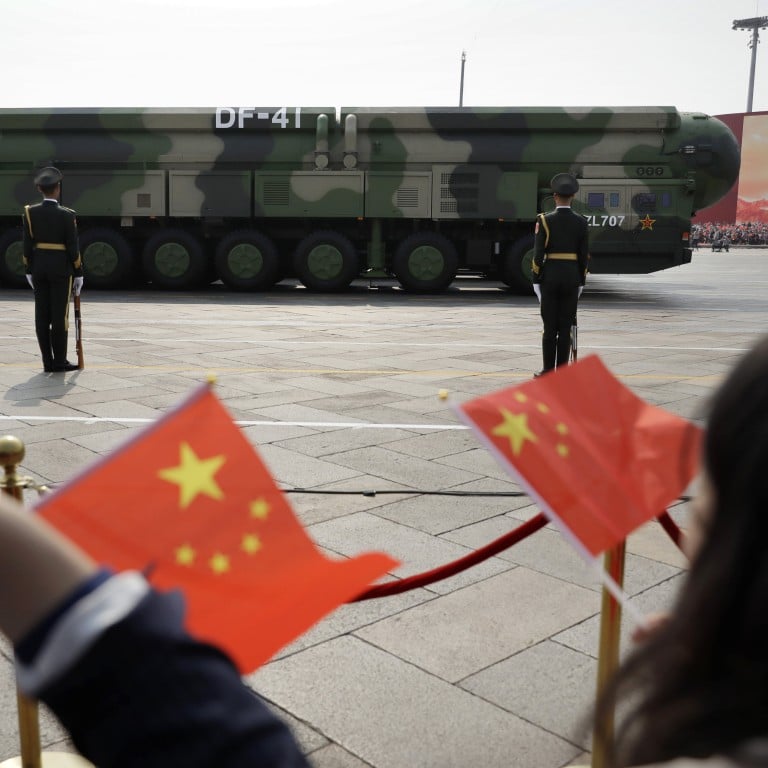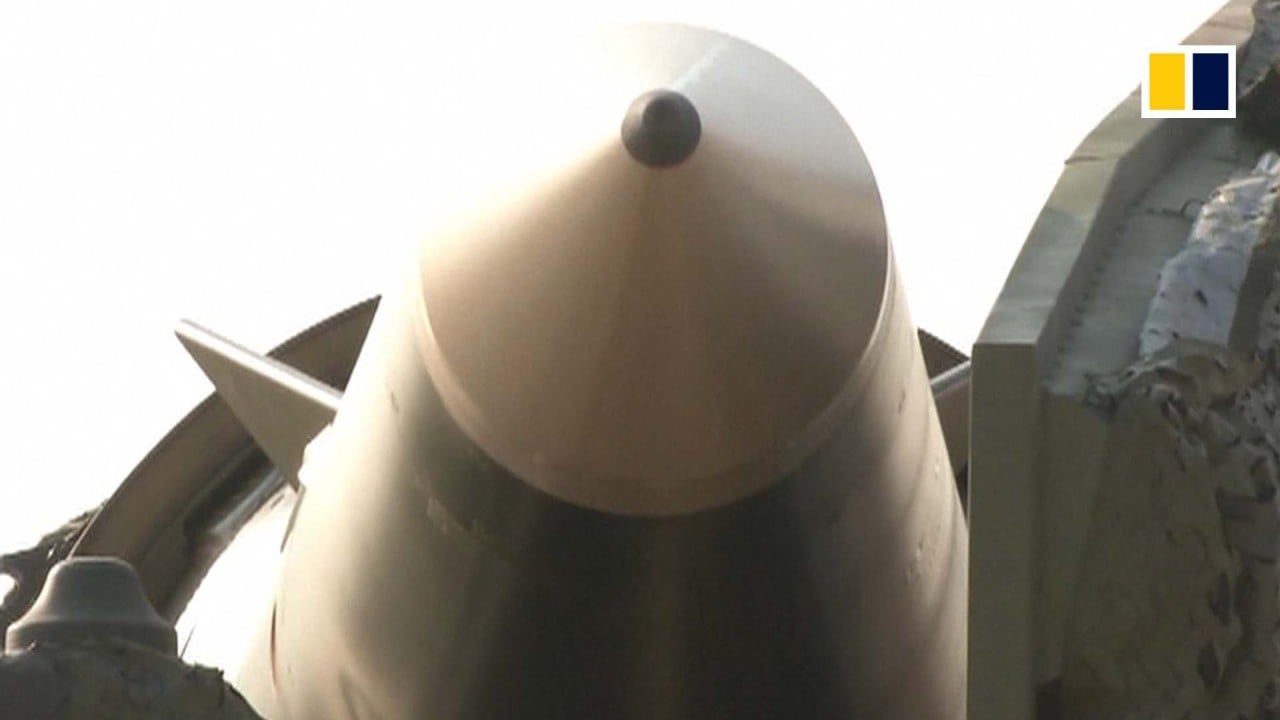
Could China use a high-speed ‘doomsday train’ to launch nuclear missiles?
- Researchers look at the effects on the rail and foundations if an intercontinental ballistic missile was launched from a high-speed train
- Compared with heavy-haul railways the faster, smoother train is safer and better conceals military vehicles, the Chengdu team says
High-speed rail is being considered as a potential launch platform for nuclear strikes after a new study by Chinese researchers suggested it was more suitable than previously thought.
In China, these trains travel up to 350km/h (217mph). These trains are slim, with up to 16 carriages each weighing about 60 tonnes.
While a modified high-speed train could withstand a launch, most of the stress caused would pass down to the rail and its foundations, potentially damaging the infrastructure and rendering it unsafe and unusable.
Using data from previous test launches conducted by the Chinese military and computer modelling, Yin and his colleagues simulated the operation of a high-speed rail launch system.
Their findings, published in the peer-reviewed Journal of Southwest Jiaotong University on Thursday, suggested that in some circumstances, a high-speed railway could perform better than a heavy-duty industrial railway, which was generally considered more suitable for the job.
“Compared with heavy-haul railways, high-speed railways operate faster and more smoothly. This means that on high-speed rails, the mobility, safety and concealment of military vehicles would be greater,” said the researchers.
A normal railway uses ballast, such as small rocks and gravel, to absorb shocks. A heavy haul line built to transport ore and coal requires more ballast.
China says it will continue to develop nuclear arsenal
The powerful shock wave produced by an ICBM launch could go as deep as 8 metres (26 feet) underground, far beyond the thickness of most rail lines’ base structure. Even heavy-duty rail would need a better fortified underlying structure to survive a launch, according to a study by Yin’s team in 2020.
But their latest study said it would not be necessary to provide extra strength for high-speed railway which has rails laid and fixed on concrete with no need for ballast as a buffer zone.
According to the results of the researchers’ simulation, most of the disturbances caused by firing off a missile would be limited to shallow areas of the rail infrastructure, where damage was more easily detected and repaired.
A Beijing-based researcher studying rail engineering said the conclusion was not entirely a surprise. The extremely high operational speed required the rail line to have foundations much stronger than ordinary rail, said the researcher who asked not to be named.
The supporting structure of some high-speed railway foundations in China is as deep as 60 metres, according to openly available information.
Yin’s team found other advantages in launching missiles from a high-speed rail compared with heavier duty railway, including shorter shocks.
But they cautioned that some extremely low-frequency vibrations produced by the launcher could pose a risk to surface components, such as the rail and concrete slab.
It is not clear if or when the Chinese military would deploy a nuclear launch platform based on high-speed rail.
The researchers could not be reached for comment by the time of this report.
A train-based ICBM launch system would be more likely to survive the first wave of nuclear attack than other land-based systems, such as silos and trucks, according to military experts. And a train could carry as many missiles as a nuclear submarine, according to some estimates.
A locomotive carrying nuclear weapons, also known as doomsday train, was first proposed by the American military during the Cold War. The former Soviet Union built such a system and employed it for decades.
From the outside, the doomsday train looks almost identical to a normal train. Besides carrying missiles, it also provided living quarters for military personnel and technicians.
Even if the train was identified by a passing spy satellite, the enemy would find tracking and destroying it difficult, especially in a country with a massive railway system going through mountains and tunnels.
Ukraine war is backdrop in US push for hypersonic weapons
In less than two decades China has built up the world’s largest high-speed railway network. It plays an important role in the Chinese military’s logistic support system by serving as rapid transport for personnel and cargo, but its use in nuclear warfare has not been openly discussed.
China reportedly tested using rail to launch a DF-41 missile in 2016. The missile was ejected into the air by pressurised gas without igniting its rocket engine.
The DF-41 missile is an 80-tonne ICBM carrying multiple nuclear warheads with a range up to 15,000km (9,300 miles).
It is about 20 metres long and 2 metres wide. The carriage of a typical Chinese high-speed train is about 27 metres long and more than 3 metres in diameter.



